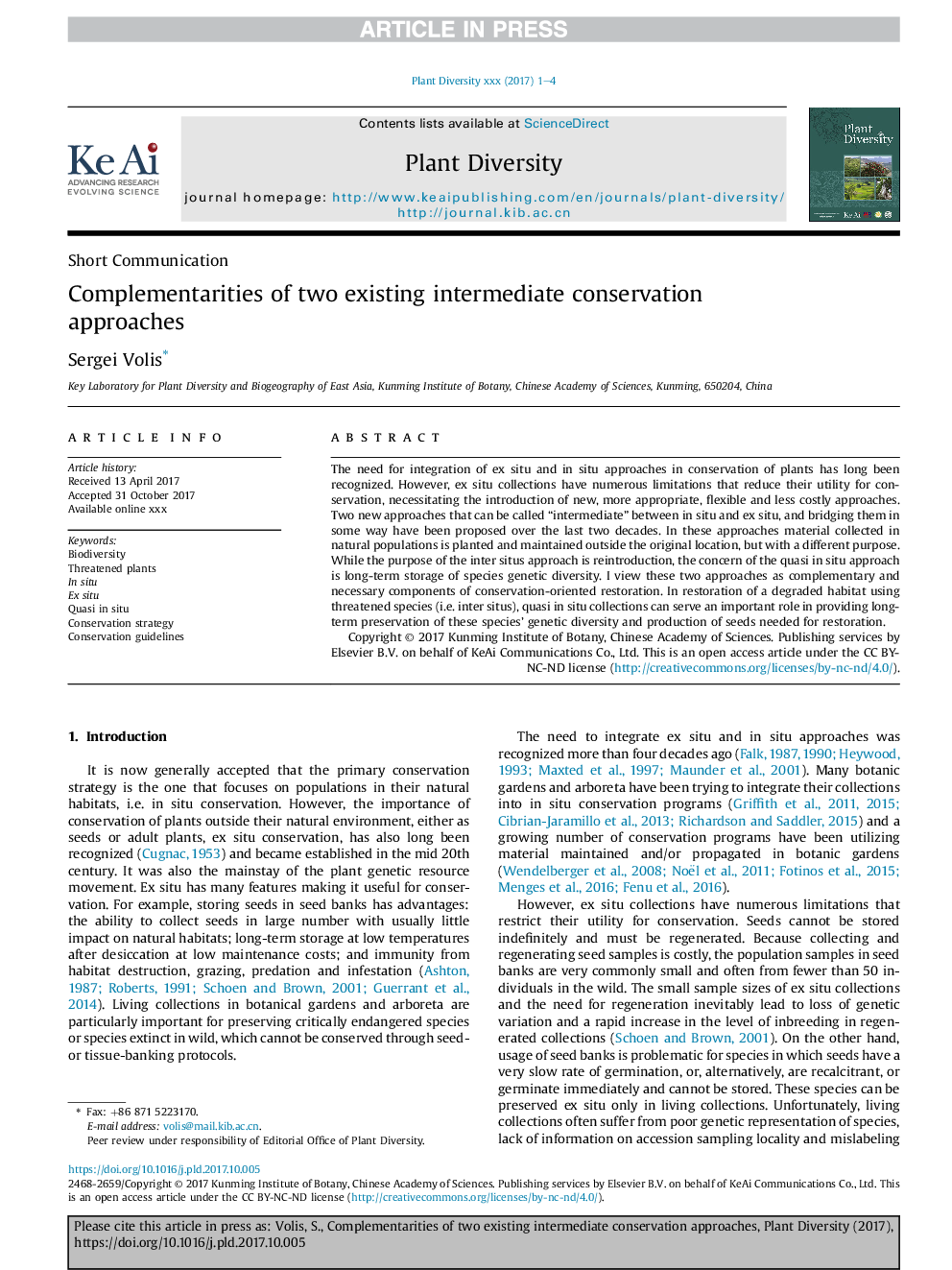| Article ID | Journal | Published Year | Pages | File Type |
|---|---|---|---|---|
| 8887601 | Plant Diversity | 2017 | 4 Pages |
Abstract
The need for integration of ex situ and in situ approaches in conservation of plants has long been recognized. However, ex situ collections have numerous limitations that reduce their utility for conservation, necessitating the introduction of new, more appropriate, flexible and less costly approaches. Two new approaches that can be called “intermediate” between in situ and ex situ, and bridging them in some way have been proposed over the last two decades. In these approaches material collected in natural populations is planted and maintained outside the original location, but with a different purpose. While the purpose of the inter situs approach is reintroduction, the concern of the quasi in situ approach is long-term storage of species genetic diversity. I view these two approaches as complementary and necessary components of conservation-oriented restoration. In restoration of a degraded habitat using threatened species (i.e. inter situs), quasi in situ collections can serve an important role in providing long-term preservation of these species' genetic diversity and production of seeds needed for restoration.
Related Topics
Life Sciences
Agricultural and Biological Sciences
Ecology, Evolution, Behavior and Systematics
Authors
Sergei Volis,
